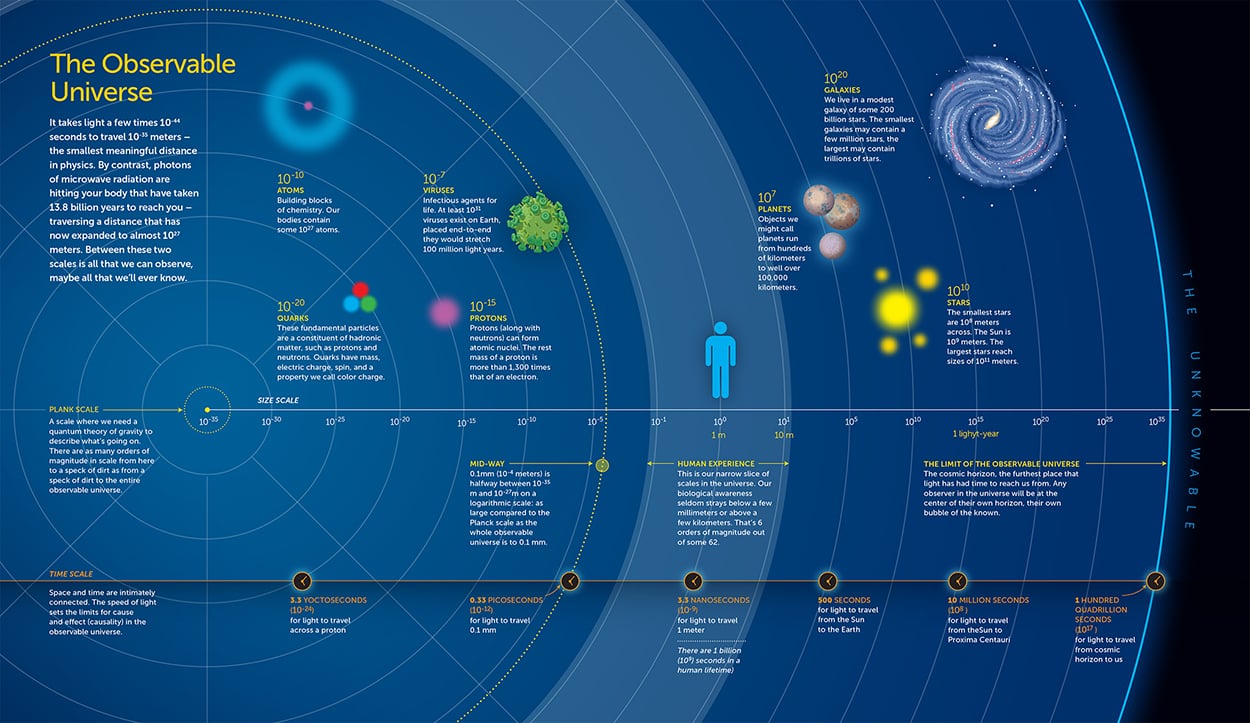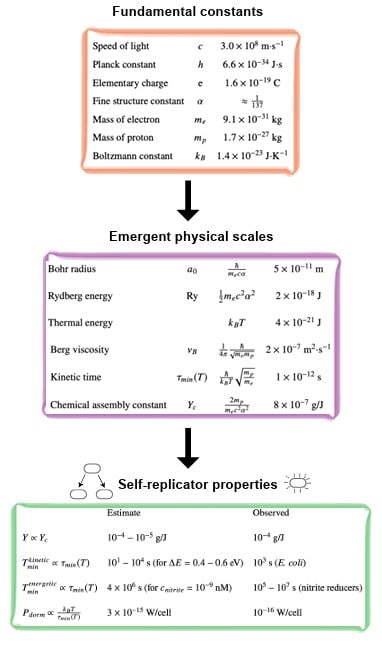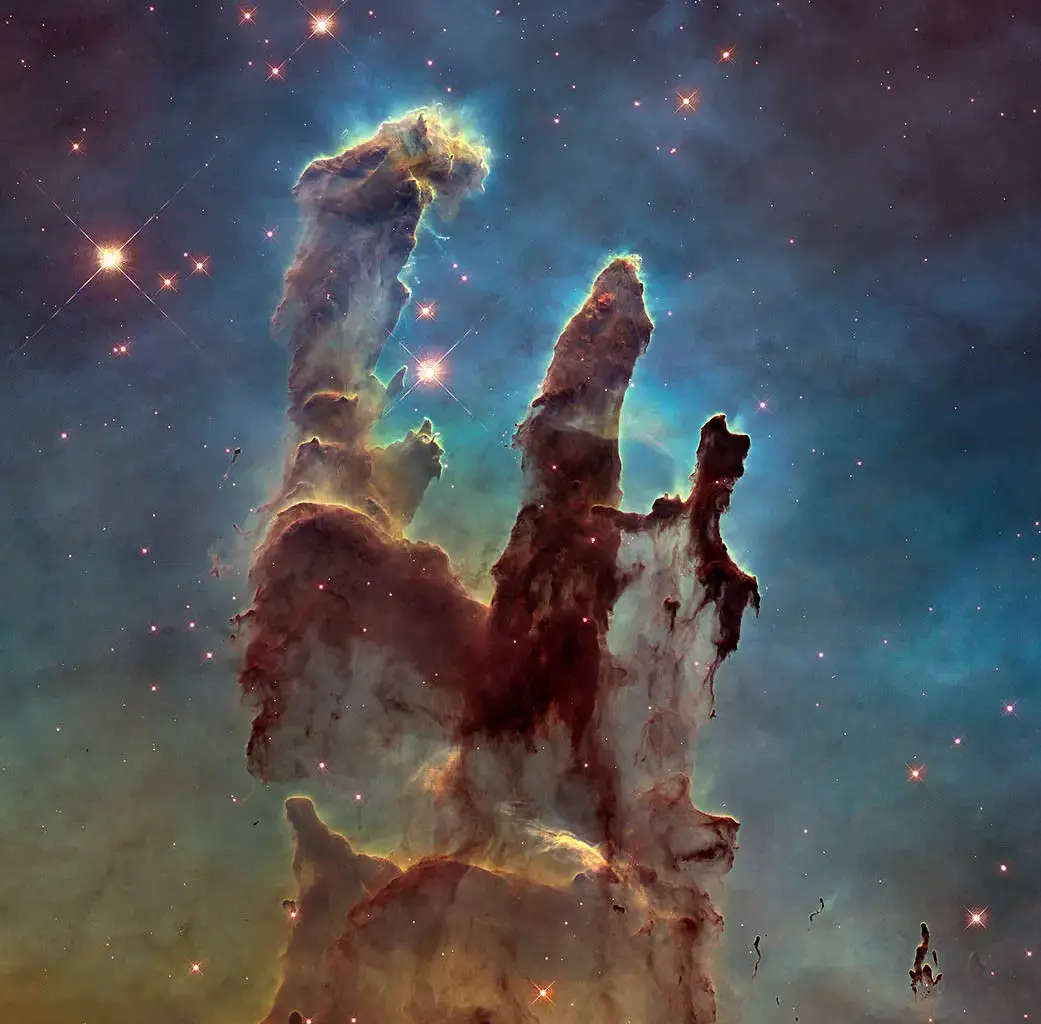What is the meaning of life? Even the best of us couldn’t hope to answer that question in a universe today article. But there are those who would try to “constrain” it, at least in terms of physics. A new paper from Pankaj Mehta of Boston University of Jané Kondev of Brandeis that was recently pre-published on arXiv looks at how the fundamental constants of physics might be applied to life as we know it – and even life as we don’t know it yet. Their idea doesn’t necessarily give the answer to the ultimate question, but it does tie two seemingly disparate fields nicely together.
Their work was inspired by Victor Weisskopf, an Austrian-American physicist who famously derived many of the properties of matter by deriving them from the “first principles” of the physical constants that underpin our universe. His work in the 1970s also famously excluded the properties of one extremely important type of matter – life. That is where Drs. Mehta and Kondev stepped in.
First, they had to define “life”, which, if you ask anyone involved in biology, can be a tricky process in itself. Their definition, which for the purposes of explaining the idea we’ll have to accept at face value, is that life is “a novel form of non-equilibrium self-organized matter whose defining feature is high-fidelity self-replication.” In other words, the meaning of life is to perpetually separate itself from its environment (at least energetically) and to reproduce.
 Powers of 10 Infographic showing the scale differences between fundamental constants and life as we know it. Credit – 5W Infographics
Powers of 10 Infographic showing the scale differences between fundamental constants and life as we know it. Credit – 5W Infographics
To go along with that definition, they further define three fundamental properties of life that “characterize” it. First is the “growth yield”, which defines how much additional biomass can be produced per unit of energy (typically a Joule). Second is the minimum doubling time – i.e. the fastest an organism can possibly double in number. Third is the “Minimum Power Consumption in Dormancy”, which measures how much energy life needs to sustain its “separateness” from the environment and maintain its own integrity against the forces of chaos – represented by entropy in the Second Law of Thermodynamics.
According to the paper, each of those fundamental properties can be derived from the physical constants of the universe – specifically the laws of quantum theory and thermodynamics. On a quantum scale, constants like Planck’s constant, the mass of an electron, mass of a proton, and the speed of light, can define higher level constant values such as the Bohr radius (the size of an atom) and the Rydberg energy (energy of an electron). Thermal values are similarly defined by the Boltzmann constant and temperature, whereas the “Kinetic Time Scale” that can be used to define the time scales for biological replication is based on a combination of both quantum and thermal constant values.
When defining the “growth yield”, the authors calculate an idealized value based on the mass of a proton, mass of an electron, speed of light, and the fine structure constant, which defines the strength of electromagnetic interactions between fundamental particles like the proton and electron. They calculate the idealized growth yield to be somewhere around the 8×10-7 g / Joule. However, for carbon-based life, like us, it wouldn’t stick to the idealized number, and would grow to about 10-4 g/Joule – about in line with the observed value for carbon-based life on Earth.
 Physical constants convert to physical scales, which drive properties of life, as shown in this chart. Credit – P. Mehta & J. Kondev
Physical constants convert to physical scales, which drive properties of life, as shown in this chart. Credit – P. Mehta & J. Kondev
Minimum doubling time, on the other hand, could be limited in one of two ways. If there’s plenty of energy to go around, the limiting factor is the speed of the biochemical reactions that allow for the increase in the number of cells. On the other hand, if there isn’t abundant energy, the growth factor is limited by how quickly life can collect energy in order to reproduce. In both cases, the model defined in the paper that is based on the fundamental constants accurately predicts at least the scale of how these processes are observed in the field. With abundant energy, bacteria can double in size in a few hundred seconds, whereas with limited energy it might take them anywhere between tens of days to hundreds of years to double.
Fighting entropy while dormant is hard work for a cell, as it continually loses ions that keep it’s “ion gradient” that differentiates it from its environment. These ions escape through “pores” in the cell that form due to changes in the cell’s thermal environment. This mechanism is based on both the thermal and kinetic constants described above, and is calculated to be about 3 x 10-15 Watts/cell. Again, this aligns with experimental values of 10-16 W / cell.
With all the model values aligning nicely with the measured experimental values of these biological markers, the authors point out that their fundamental premise – that the laws of physics impose constraints on cellular life – seems to be valid. Mostly this model is useful as a framework for looking at how life exists in our universe under the same physical laws, and could be used to help the search for life distinct from our own. It does a great job of carrying on and expanding Weisskopft’s vision of a complete framework from the bottom of describing all of the universe from first principles – even that temperamental process called life, which still lacks a universal “meaning” now matter how many constraints we put on it.
Learn More:
P. Mehta & J. Kondev – What do the fundamental constants of physics tell us about life?
UT – What’s So Fundamental About the Fundamental Constants?

